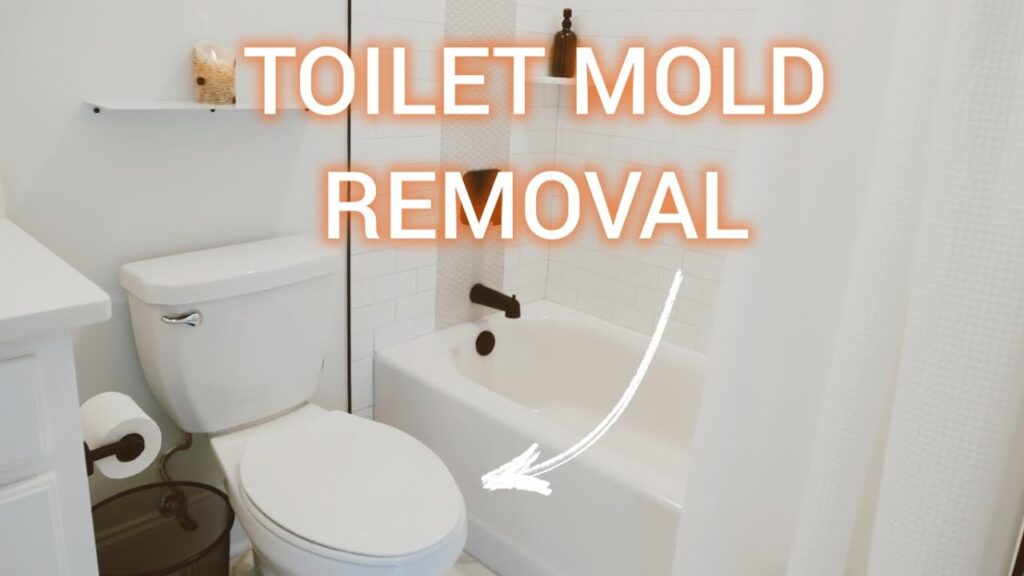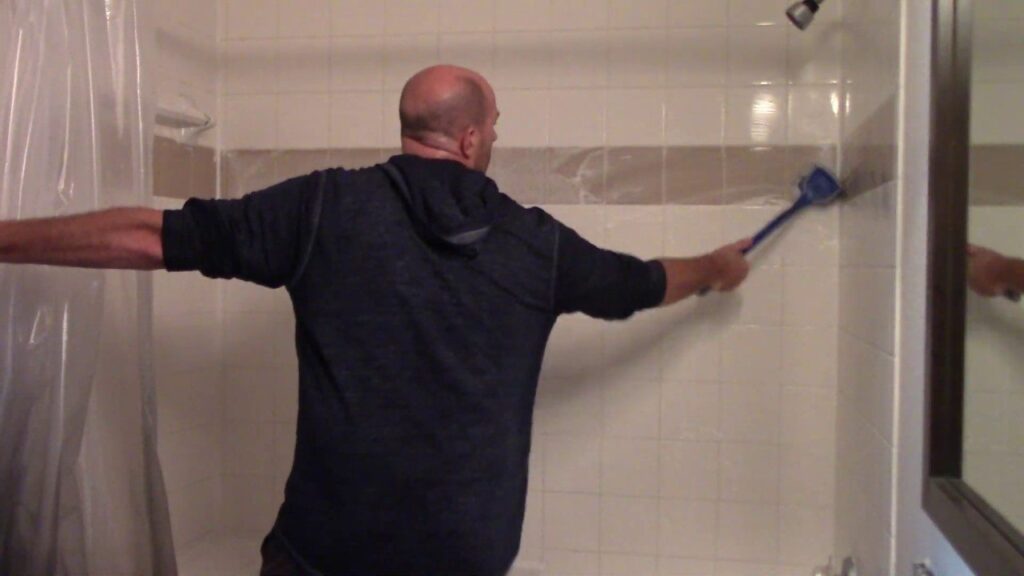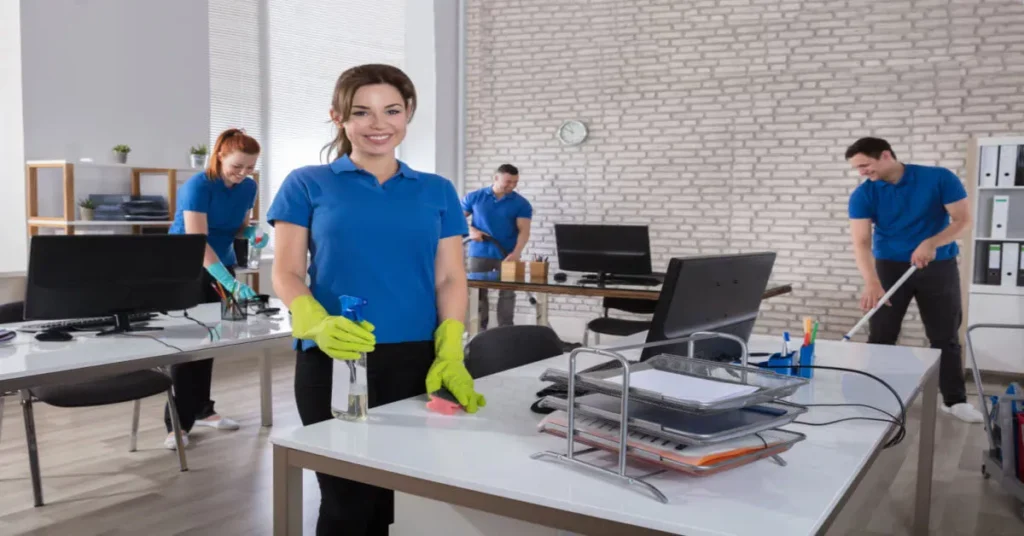Mold is a common headache for homeowners in Jacksonville, especially in bathrooms where humidity levels tend to soar. With our warm, tropical climate and the frequent afternoon showers, it’s no wonder that those pesky mold spores find a cozy home in our bathrooms. Not only does mold look unsightly, but it can also lead to health issues and damage to your property. The key to a mold-free bathroom lies in understanding the factors that contribute to its growth and knowing how to tackle it effectively. In this guide and along with the help of Evolution DR Cleaning, we will explore practical tips for preventing mold, effective cleaning methods, and how to create a healthier bathroom environment for you and your family.

Whether you’re a seasoned DIY-er or someone who’s never picked up a cleaning sponge, this guide will help you keep your bathroom fresh and mold-free, ensuring a safe and healthy environment for you and your family. With easy-to-follow steps and expert advice on bathroom cleaning services, you’ll be empowered to tackle mold head-on and prevent it from returning. Say goodbye to the stress of mold issues and hello to a cleaner, more inviting bathroom space!
Understanding the Causes of Mold Growth in Bathrooms
Mold thrives in environments that provide moisture, warmth, and organic material to feed on. In bathrooms, these conditions are often met due to daily activities like bathing and showering. The steam from hot water raises humidity levels, creating a perfect breeding ground for mold spores. Additionally, poor ventilation exacerbates the issue by trapping humidity inside, leading to higher bathroom cleaning costs in Jacksonville. Mold can also grow in areas that are frequently overlooked, such as behind the toilet or under the sink, where moisture can accumulate unnoticed. Understanding these causes is crucial for preventing mold growth and maintaining a clean bathroom environment.
The Impact of Jacksonville’s Climate on Bathroom Mold
Jacksonville’s warm, humid climate plays a significant role in mold growth within homes, particularly in bathrooms. The region experiences high humidity levels, especially during the summer months, which can make it easier for mold spores to flourish. Frequent afternoon thunderstorms and rain further contribute to elevated moisture levels, both inside and outside the home. This natural humidity creates an environment where mold can thrive, particularly in poorly ventilated areas like bathrooms. Cleaning bathroom grout in humid weather can also exacerbate the problem, as moisture can accumulate in the grout lines. Understanding the impact of Jacksonville’s climate on mold growth is essential for homeowners looking to combat this persistent issue.
Identifying Common Types of Bathroom Mold
Not all molds are created equal, and various species can invade your bathroom. Common types include Aspergillus, Cladosporium, and Stachybotrys, also known as black mold. Aspergillus appears as a green or black fuzzy growth and is often found in damp areas. Cladosporium, which can be green, brown, or black, thrives on wet surfaces and is commonly seen on shower curtains and tiles. Stachybotrys is notorious for its health risks and often appears as dark green or black patches in areas with prolonged moisture. Recognizing these molds is vital for effective treatment and prevention. By identifying the specific type of mold present, homeowners can choose the most suitable cleaning solutions and strategies to eradicate it.
Signs of Mold Infestation: What to Look For
Detecting mold early is crucial to preventing extensive damage and health issues. Homeowners should watch for visible signs, such as black or green spots on walls, ceilings, and grout lines. Mold may also manifest as a musty odor, which indicates hidden growth, often in damp or poorly ventilated areas. Water stains or discoloration on walls and ceilings can also suggest moisture problems, creating a suitable environment for mold. Additionally, if residents experience unexplained respiratory issues or allergic reactions, it could be a sign of mold exposure. Regularly inspecting your bathroom for these signs can help you catch mold infestations early and take necessary action to address them before they worsen.
Preventive Measures: Keeping Your Bathroom Mold-Free
Prevention is key to maintaining a mold-free bathroom. Start by ensuring proper ventilation; use exhaust fans during and after showers to reduce humidity levels. Opening windows can also help circulate air and lower moisture. Regularly check for leaks in pipes, faucets, and showerheads, as these can create damp conditions that foster mold growth. Cleaning and drying wet surfaces, such as shower walls and bath mats, can also inhibit mold development. Consider using mold-resistant paints and materials during bathroom renovations for an added layer of protection. Lastly, keeping humidity levels below 60% with a dehumidifier can significantly reduce the likelihood of mold growth, ensuring a healthier bathroom environment.
Essential Cleaning Supplies for Mold Removal
Having the right cleaning supplies is essential for effective mold removal in your bathroom. Start with protective gear, such as gloves, goggles, and a mask, to safeguard yourself from mold spores. A good mold cleaner is crucial; options include commercial mold removers, bleach solutions, or natural alternatives like vinegar and baking soda. A scrubbing brush or sponge will help you scrub affected surfaces, while an old toothbrush can tackle smaller, hard-to-reach areas. Microfiber cloths are excellent for wiping down surfaces after cleaning. Finally, consider using a spray bottle for easy application of cleaning solutions. Equipping yourself with these essential tools will make the mold removal process more efficient and effective.
Step-by-Step Guide to Cleaning Mold from Bathroom Surfaces
Cleaning mold from bathroom surfaces requires a systematic approach for effective results. Begin by gathering your cleaning supplies and wearing protective gear. Ventilate the area by opening windows or using an exhaust fan to minimize exposure to mold spores. Next, apply your chosen mold cleaner to the affected areas, allowing it to sit for at least 10 minutes to break down the mold. Use a scrubbing brush or sponge to gently scrub the surface, ensuring you reach all corners and crevices. Rinse the area with clean water and dry it thoroughly with a microfiber cloth. Finally, inspect the area for any remaining mold and repeat the process if necessary. Regular cleaning can help prevent mold from returning.
DIY Solutions: Natural Remedies for Mold Cleaning
For those seeking natural alternatives to commercial mold cleaners, several effective DIY solutions can help remove mold from bathroom surfaces. One popular option is a vinegar solution, which can be created by mixing equal parts of white vinegar and water in a spray bottle. Vinegar is a natural antifungal agent and can kill many types of mold. Another effective remedy is baking soda; mix it with water to form a paste and apply it to the moldy areas. Let it sit for a while before scrubbing and rinsing. Hydrogen peroxide is also a powerful option; use a 3% solution in a spray bottle to treat mold. These natural remedies are not only effective but also eco-friendly and safe for your family.

When to Call in Professional Bathroom Cleaning Services
While many homeowners can tackle mold cleaning themselves, certain situations warrant professional assistance. If the mold covers a large area, typically more than 10 square feet, it may be best to call in experts who specialize in mold remediation. Professionals have the training, equipment, and expertise to safely remove mold and address underlying moisture issues. If the mold is deep-seated in walls or ceilings, or if it poses health risks, such as black mold, professional intervention is crucial. Additionally, if homeowners experience ongoing mold problems despite their cleaning efforts, it’s time to consult experts. Professional services not only remove mold but also provide valuable advice on preventing future infestations.
Maintaining a Mold-Free Bathroom: Long-Term Tips
To ensure your bathroom remains mold-free in the long term, adopt a consistent maintenance routine. Start by regularly cleaning surfaces, including walls, tiles, and grout, to remove any potential mold spores. Ensure proper ventilation by keeping exhaust fans running during showers and opening windows whenever possible. Regularly inspect plumbing for leaks, and address any issues promptly to minimize moisture accumulation. Consider using mold-resistant materials and paints during renovations for added protection. Establish a monthly cleaning schedule that includes mold prevention techniques, such as applying vinegar or baking soda solutions to vulnerable areas. By incorporating these long-term tips into your cleaning routine, you can significantly reduce the risk of mold growth and maintain a healthy bathroom environment.
Health Risks Associated with Mold Exposure
Mold exposure can pose serious health risks, making it essential to address infestations promptly. Common symptoms of mold exposure include respiratory issues, such as coughing, wheezing, and difficulty breathing, particularly for individuals with asthma or allergies. Mold can also trigger allergic reactions, resulting in sneezing, runny noses, and skin irritations. Prolonged exposure to certain types of mold, like Stachybotrys, can lead to more severe health problems, including infections and chronic respiratory diseases.
Conclusion
In conclusion, keeping your bathroom mold-free in Jacksonville requires a proactive approach and an understanding of the environmental factors at play. By recognizing the signs of mold growth, implementing preventive measures, and using effective cleaning techniques, you can significantly reduce the risk of mold infestations. Whether you choose to tackle the issue yourself or enlist the help of professional cleaning services, prioritizing mold removal is essential for maintaining a healthy home environment. Remember that regular maintenance and vigilance are key to preventing mold from returning. By taking these steps, you can enjoy a clean, fresh bathroom that not only looks inviting but also ensures the safety and well-being of you and your family for years to come.
FAQs
How can I tell if there’s mold in my bathroom?
You can identify mold by looking for visible dark spots on walls, ceilings, or grout. A musty odor or unexplained respiratory issues may also indicate mold presence.
2. What are the best cleaning solutions for removing mold?
Effective cleaning solutions include commercial mold removers, vinegar, baking soda, and hydrogen peroxide. These options can effectively kill mold spores and help restore surfaces.
3. How can I prevent mold from growing in my bathroom?
To prevent mold, ensure proper ventilation by using exhaust fans and keeping windows open. Regularly cleaning wet surfaces and addressing leaks promptly can also help reduce moisture.
4. When should I consider hiring professional mold removal services?
If mold covers more than 10 square feet or is deeply embedded in walls, it’s best to seek professional help. Additionally, if health issues arise due to mold exposure, consult experts.
5. What health risks are associated with mold exposure?
Mold exposure can lead to respiratory problems, allergic reactions, and skin irritations, particularly in sensitive individuals. Prolonged exposure may result in more serious health complications.


